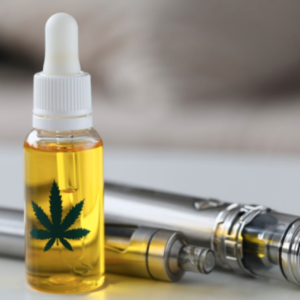In recent years, CBD has emerged as a promising solution for a wide range of health issues in both humans and animals. While it’s gained significant popularity among people seeking relief from anxiety, pain, and inflammation, it’s also becoming increasingly recognized for its potential benefits for pets. In this article, we’ll explore the use of CBD for pets and how it can help alleviate pain and discomfort in our beloved four-legged companions.
Understanding CBD for Pets
CBD, short for cannabidiol, is a compound found in the cannabis plant. Unlike its cousin THC (tetrahydrocannabinol), CBD does not produce the psychoactive effects typically associated with cannabis use. Instead, it interacts with the endocannabinoid system, a complex network of receptors in the body that plays a crucial role in regulating various physiological functions.
How CBD Works for Pets
Just like in humans, pets have an endocannabinoid system that influences their overall well-being. When CBD is introduced into their system, it can help restore balance by interacting with these receptors. This interaction can result in various therapeutic effects, such as pain relief, reduced inflammation, and a sense of calmness.
Pain Management for Pets
One of the primary reasons pet owners turn to CBD is to manage pain and discomfort in their furry friends. Whether it’s due to aging, injury, or chronic conditions like arthritis, pets can experience pain that greatly impacts their quality of life. CBD can provide natural relief without the potential side effects of traditional pain medications.
Reducing Anxiety and Stress
CBD for pets isn’t limited to physical ailments; it can also help with mental and emotional issues. Many pets suffer from anxiety and stress, which can manifest as destructive behavior, excessive barking, or withdrawal. CBD has shown promise in reducing these symptoms by promoting relaxation and a sense of well-being in pets.
CBD Products for Pets
CBD for pets is available in various forms, making it easy for pet owners to find the right option for their furry companions. Some common forms include CBD oil tinctures, treats, capsules, and topical creams. It’s essential to choose a product specifically formulated for pets, as the dosages and ingredients may differ from those intended for humans.
Consulting with a Veterinarian
Before starting any CBD regimen for your pet, it’s crucial to consult with a veterinarian. They can provide guidance on the appropriate dosage and help you determine if CBD is a suitable option for your pet’s specific condition. Additionally, a veterinarian can monitor your pet’s progress and make adjustments to the treatment plan as needed.
Safety and Potential Side Effects
CBD for pets is generally considered safe when administered correctly. However, some pets may experience mild side effects, such as drowsiness or digestive issues. These side effects are typically temporary and can often be resolved by adjusting the dosage. It’s essential to monitor your pet closely when starting CBD and seek professional advice if you have concerns.
Choosing Quality CBD Products
The market for CBD pet products has grown rapidly, so it’s essential to select high-quality, reputable brands. Look for products that have been tested by third-party laboratories for potency and purity. This ensures that you’re providing your pet with a safe and effective product.
Conclusion
CBD for pets has the potential to significantly improve the quality of life for our furry companions by offering relief from pain, anxiety, and other discomforts. However, it’s crucial to approach CBD use for pets with care and consult with a veterinarian to ensure that it’s the right choice for your pet’s unique needs. With the right guidance and quality products, you can help your fur-ever friend live a happier and healthier life.





